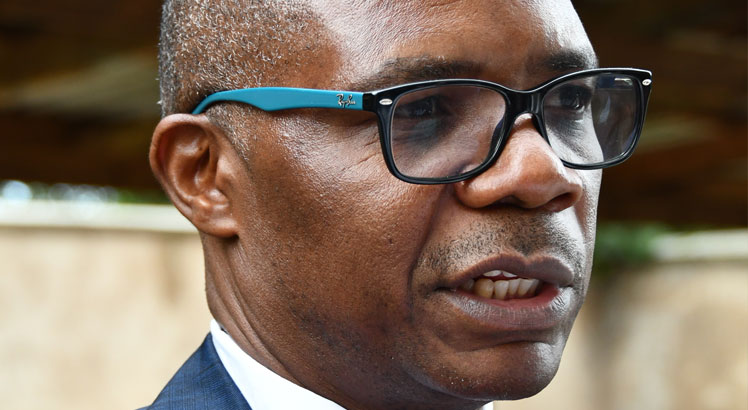Natural disasters have claimed about 5 527 people and cost the economy an estimated K1.29 trillion between 2015 and 2023, an analysis has shown.
For Malawi to fully recover, experts say it will cost about K2.66 trillion.
However, funding challenges have frustrated such recovery efforts as other disasters have left the country in dire stress to find resources.
The country was struck by cyclones Chedza in 2015 as well as Idai and Gombe in 2019. In 2022, Tropical Storm Ana affected most parts of Southern Region before Cyclone Freddy in March this year devastated the region further.
Besides the storms and cyclones, Malawi has in between also been hit by several health emergencies, including Covid-19, polio and more recently, cholera.
In separate interviews yesterday, experts expressed wary that several global reports point to more disasters ahead.
A school block destroyed by Cyclone Freddy in Phalombe
Coalition of Civil Society Network on Climate Change national coordinator Julius Ng’oma said current global reports show that droughts and cyclones, are expected; hence, Malawi needs to prepare to control the extent of the damage the disasters will cause.
He said: “Work with communities, councils, planning units like ministries responsible for land to be able to demarcate these areas and have a plan where people, property and infrastructure that might be relocated to.
“Zoning is more of an environmental and social impact assessment. Work with the general citizenry to ensure that we minimise environmental damage happening in some areas through deforestation.”
Department of Climate Change and Meteorological Services director Lucy Mtilatila said extreme events will be common; hence, the country must enhance resilience projects.
She said: “We must invest in early warning equipment such as weather radar. According to United Nations [UN], one dollar investment in early warning saves seven dollars in disaster response. We also need to invest in weather forecasting tools.
“We also can enhance disseminating methods to ensure that warnings reach the intended communities.”
Dr Mtafu Manda, a planning associate professor at Mzuzu University yesterday stressed the need for policymakers and financiers to always pay attention to environmental impact assessments (EIAs) when implementing infrastructure projects to minimise damage.
He said: “Many policy makers and financiers think they won’t have credit to finance planning because its benefits are not easy to see in the short-term so they prefer to wait for a disaster and give hand-outs to appear to the general public that they have people’s welfare in their hearts.
“We need a detailed geotechnical, land use and engineering studies in the affected areas before infrastructure projects are implemented. ”
The 2023 Cyclone Freddy Post-Disaster Needs Assessment report admits that the frequency of these disasters exceeds the country’s capacity to conduct recovery efforts, suggesting the need to integrate recovery and development planning.
In March this year, Parliament passed the new Disaster Risk Management law which establishes a committee responsible for providing leadership in the development, coordination and implementation of disaster risk management strategies and interventions.
The post Disasters cost Malawi K1.29tn in 9 years first appeared on The Nation Online.
 Moni Malawi
Moni Malawi 

